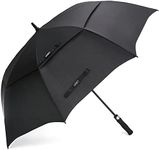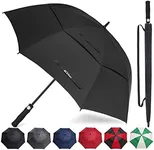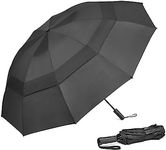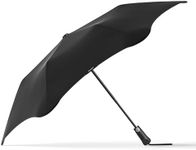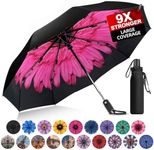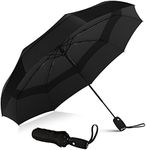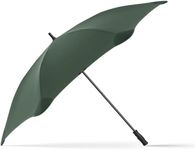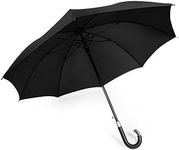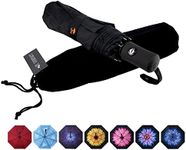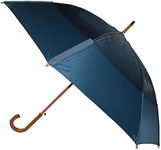Buying Guide for the Best Windproof Umbrellas
Choosing a windproof umbrella is all about finding a balance between durability, ease of use, and protection from the elements. Windproof umbrellas are designed to withstand strong gusts without flipping inside out or breaking, making them a smart choice for anyone who faces unpredictable weather. When shopping for one, it's important to look beyond just the appearance and focus on the features that contribute to its wind resistance and overall usability. Understanding the key specifications will help you select an umbrella that matches your needs, whether you want something compact for travel or sturdy for daily use.Frame MaterialThe frame material refers to what the umbrella's ribs and shaft are made from, which is crucial for wind resistance. Common materials include steel, aluminum, and fiberglass. Steel is strong but can be heavy and prone to rust, while aluminum is lighter but may bend under strong winds. Fiberglass is often considered the best for windproof umbrellas because it is both flexible and durable, allowing the umbrella to bend without breaking. If you need an umbrella for very windy conditions, look for one with a fiberglass frame. For occasional use in milder weather, aluminum or steel may suffice.
Canopy DesignThe canopy design determines how well the umbrella can handle wind. Windproof umbrellas often feature vented canopies, which have overlapping layers or small openings that let wind pass through instead of catching it. This reduces the risk of the umbrella flipping inside out. If you live in a very windy area, a vented canopy is a must. For less windy environments, a standard single-layer canopy may be adequate, but it won't offer the same level of wind resistance.
Rib Count and ConstructionThe ribs are the spokes that support the canopy, and their number and construction affect the umbrella's strength. More ribs generally mean better support, with 8 to 10 ribs being common for windproof models. However, the quality of the ribs matters more than the quantity; look for reinforced or double-layered ribs made from flexible materials like fiberglass. If you need maximum durability, choose an umbrella with more, well-constructed ribs. For lighter use, fewer ribs may be acceptable.
Size and CoverageSize refers to the diameter of the canopy when open, which determines how much coverage you get. Compact umbrellas are easier to carry but offer less protection, while larger umbrellas provide more coverage but can be bulkier. If you often walk in open, windy areas or want to stay dry with a backpack or another person, opt for a larger canopy. For commuting or travel, a smaller, more portable umbrella may be more convenient.
Opening MechanismThe opening mechanism is how you open and close the umbrella, with options like manual, automatic, or auto-open/close. Automatic mechanisms are convenient, especially when you need to open the umbrella quickly in sudden rain or wind. However, they can add weight and complexity. If you value speed and ease, go for an automatic or auto-open/close model. If you prefer simplicity and reliability, a manual mechanism might be better.
Handle DesignThe handle design affects comfort and grip, especially in windy conditions. Ergonomic, non-slip handles are easier to hold onto when the wind picks up. Some handles are straight, while others are curved or have wrist straps for added security. If you expect to use your umbrella in strong winds, prioritize a handle that feels comfortable and secure in your hand.
